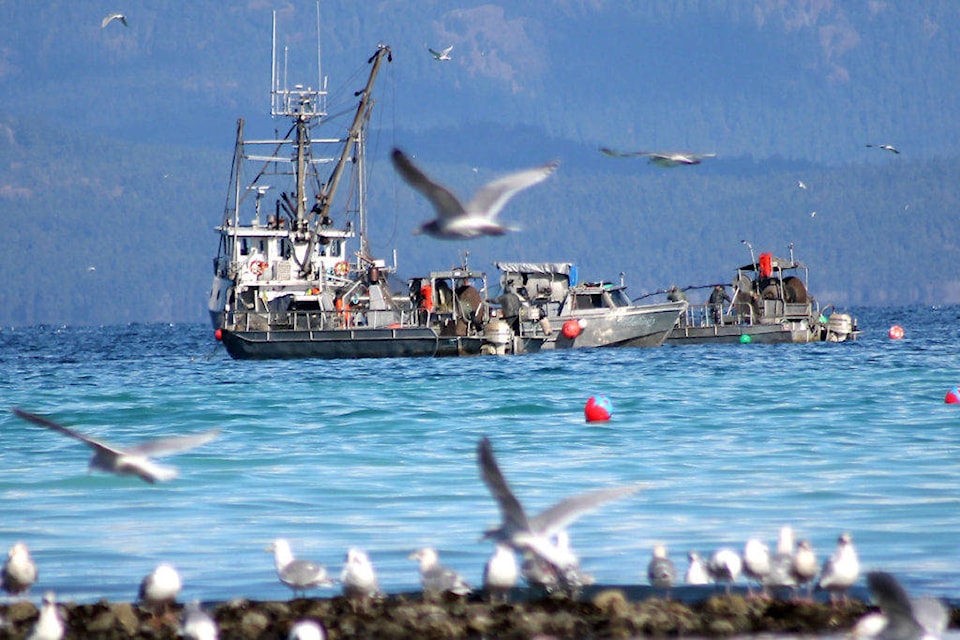Three B.C. salmon populations will receive priority attention under proposed new laws formalizing the federal government’s obligation to protect and restore Canadian fisheries at risk.
The draft regulations released Jan. 2 stem from the amended Fisheries Act in 2019 that included the formation of binding commitments on the Minister of Fisheries and Oceans to manage major stocks at sustainable levels and rebuild those at risk.
“[These regulations] would strengthen fisheries management framework leading to better conservation outcomes for the prescribed stocks, more demonstrably sustainable fisheries, and compliance with the Fisheries Act,” reads a government statement accompanying the proposed regulations. “In addition, the proposed regulations would result in the increased transparency and accountability that accompanies regulatory oversight as compared with policy approaches.”
DFO policy already steers toward the regulation’s goals, but critics complain the followthrough is often weak and drawn out. The new laws aim to cement government accountability by forcing the development of a rebuilding plan within three years of identifying a stock at risk, coupled with concrete timelines and thorough assessments of why they’re suffering.
READ MORE:
“The plan provides a common understanding of the basic ‘rules’ for rebuilding the stocks,” the statement continues.
The proposed laws indicate that within five years DFO will prescribe all 177 major fish stocks with a limit reference point (LRP), the point at which a stock falls into serious harm. DFO will be required to develop rebuilding plans for those stocks below their LRP level.
The first batch of 30 stocks include 17 below critical numbers, including Okanagan chinook and Interior Fraser Coho. Threatened stocks of west-coast Vancouver Island chinook and Pacific herring around Haida Gwaii are both on the path of receiving a rebuilding plan early this year.
B.C.’s two populations of yelloweye rockfish are also below their LRP threshold and have already received completed rebuilding plans.
Once threatened stocks grow above their LRP, the minister must implement measures to maintain them at or above the sustainable level.
Despite the stated goals behind the proposed regulations, Oceana Canada wants to see “surgical fixes” to the proposed laws before they’re approved, as the current draft offers too many loopholes.
The organization recommended three key improvements to the regulations: speeding up the process of assigning all critically low stocks with rebuilding plans; setting clearer targets within those plans; and establishing maximum-allowable timelines for targets and milestones.
READ MORE:
“They explicitly say … they don’t want to set a standard. They want to maintain full flexibility depending on the stock they’re looking at,” Josh Laughren, Oceana Canada executive director said.
“The regulations say there must be a target set, but surely, every policy already says they [DFO] must manage stocks up to a healthy level. So what are their definitions? This doesn’t define that. It just says set a target, any target, essentially. It also says they have to set a timeline, but that can be anywhere from one to 100 years.”
Oceana Canada released a critical audit of Canadian fisheries last November that found only one-quarter of stocks are healthy, down 10 per cent since its first audit in 2017. Stocks of caution have risen from 16 to 19 per cent, while stocks in critical states have increased from 13.4 per cent to 17 per cent in the same time period.
In B.C. the organization also highlighted troubling decreases in crustacean populations, the backbone of Canadian fisheries, and small forage fish that are vital prey for other commercially important fish.
Oceana cautions Ottawa that consumers are increasingly demanding sustainably-caught fish, to which the adoption of robust regulations and global best practices are key to ensuring a successful Blue Economy Strategy currently under development.
“Without changes, the draft regulations that are now open for public comment would squander this opportunity, depriving Canada of the economic and environmental benefits that come with rebuilt fish populations,” reads an Oceana statement.




